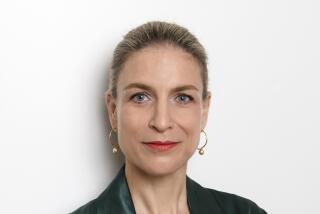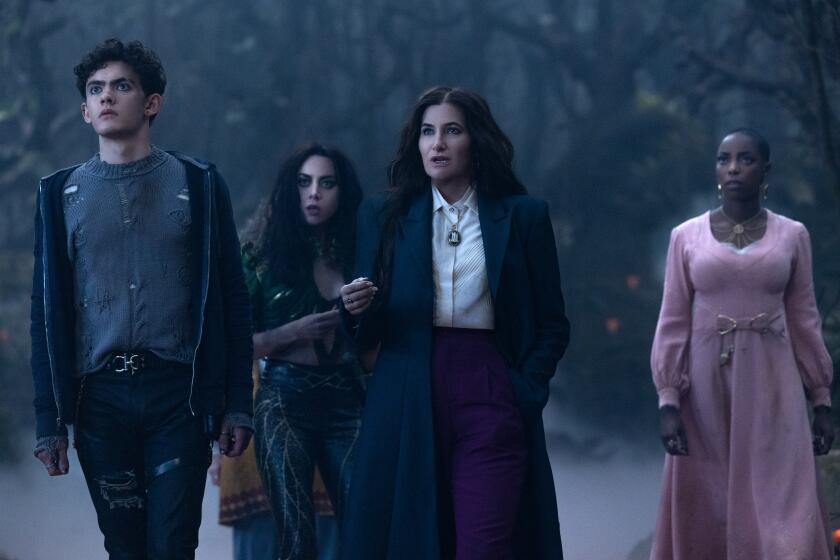Getty Trust’s new CEO: Art Institute of Chicago’s James Cuno
James Cuno, director of the Art Institute of Chicago, was named president and chief executive of the J. Paul Getty Trust, taking over the world’s wealthiest arts organization, with a $5.3-billion endowment and $250-million annual budget, but one that has suffered management turnover in recent years.
Cuno, 60, has led the Art Institute through its most ambitious expansion in its 130-year history. He will take over the vast Getty Trust, which consists not just of the museum — its most public face — but a grant-making foundation, a conservation institute and a scholarly institute.
The Getty has been without a museum director since January 2010, when Michael Brand resigned, and without a head of the trust since James Wood’s death last June. Wood was hired in 2006 to turn the organization around after Barry Munitz was forced to retire because of a scandal over his leadership and spending and a curator faced charges of trafficking in looted antiquities.
Word of Cuno’s hiring met with a mixed response. “It’s not a surprising appointment by any means but a very gratifying appointment,” says Hugh Davies, director of the Museum of Contemporary Art San Diego, calling Cuno a “seasoned” museum leader. “They came to the right conclusion and got the best person for the job.”
But several art-world figures did express surprise at the appointment.
Some wonder what Cuno’s hire means for the Getty’s increasingly aggressive stance against the looting of antiquities, since Cuno is one of the few museum leaders known to speak out against cultural patrimony laws. He argues that some antiquities are best served in encyclopedic museum collections, not necessarily back in their countries of origin. In short, will his hire affect either the Getty’s commitment to return antiquities or its reputation internationally?
Others have criticized the Getty for not taking this opportunity to combine the job leading the Trust with the job leading the museum. Under the Getty’s unusual management structure, the museum director reports to the trust president. And Brand left following clashes with Wood.
Art+Auction magazine editor Benjamin Genocchio quickly posted an editorial online criticizing that organizational structure. “So why would the Getty board have chosen to replicate the same disastrous management structure — to hire another veteran museum director (from the same Chicago institution, no less) to be its president, who in turn will have to choose a museum director to work for him?” Genocchio called it “a perfect recipe for internal conflict and tension.”
“I obviously don’t think this needs to be the case,” replied Cuno, who had not seen the editorial but was familiar with the criticism. He says hiring a director will be “a very high priority.”
Until recently, “I never directly reported to the board myself but to a president of a university. I understand the culture of the university and the benefits of delegating responsibility. I am not a micromanager or someone who needs to be involved in every decision.”
Getty board Chair Mark Siegel also defended the existing management structure, noting that the board had a “serious discussion” on whether to modify it after Wood’s death but decided not to. “The Getty’s museums are an important part of our program. But we also have three other programs inside the Getty Trust that we don’t think of as subsidiary to the museum, that stand in their own right as important, wonderful contributions,” he says. “We don’t want them to become offshoots of the museum.”
Cuno’s scholarly pedigree and managerial experience are not in question. As Davies puts it, “He’s an ideal combination of somebody with impeccable scholarly credentials and extensive international experience.”
With an M.A. and PhD in art history from Harvard, Cuno made his name in the museum world as a scholar-curator. An expert in 18th and 19th century French printmaking, he has written extensively on subjects like the French Revolution and French caricature.
Most of his jobs early on were at major universities. In the mid-1980s, he was the director of the Grunwald Center for the Graphic Arts at UCLA. He later served as director of the Hood Museum of Art at Dartmouth College from 1989 to 1991 and director of the Harvard Art Museums for the following decade. After a brief stint as head of the Courtauld Institute in London, he took the job at the Art Institute of Chicago in 2004 — a job previously held by Wood, also his Getty predecessor.
At the Art Institute, he completed a $420-million capital campaign, opening the Modern Wing in 2009 despite the economic downturn. Roughly $120 million was already in place by the time Wood left; $300 million was raised by Cuno. He managed an endowment of $600 million, with an annual operating budget of about $100 million. According to the Chicago Tribune, annual visitor traffic grew to around 2 million in 2009, up 33% from the previous year despite a 25% ticket-price hike.
When asked about his contributions there, Cuno singled out not just the addition of the Modern Wing but “working with the curators to add significantly to the collection.” He mentioned artworks acquired recently in departments ranging from African art to contemporary art with the pride of a new parent.
“I would never have left this job for another museum job,” Cuno said, reached by phone in Chicago. “But the opportunities at the Getty, with its range of programs and collections, were just too attractive.” And by collections, he means more than museum collections — he talks about the Getty Research Institute, with “perhaps the greatest art history library in the country and enormous primary archives,” as well.
He says his goals for the Getty, where he will not have the same fundraising mandate, include “bringing the heads of the four divisions together to articulate a plan and pursue a common mission.” He acknowledges that the four branches have not always worked together as well as possible, describing “the great potential” for these divisions “to find ways not just to collaborate but to leverage the benefits of one to another.”
The questions being raised about the Getty’s commitment to respecting the cultural property of other countries stem from Cuno’s comments and writings on this heated topic.
Over the years, Cuno has criticized cultural patrimony laws for being too restrictive or politically motivated. His 2008 book, “Who Owns Antiquity?,” describes the “cosmopolitan” value of an “encyclopedic museum” that draws from many cultures, criticizing what he sees as “nationalistic” claims made by modern nations like Italy that have only weak ties to the ancient civilizations that once occupied the same land.
The Getty, meanwhile, has been trying to move beyond its antiquities scandals and respect the cultural property claims of other nations, most notably Italy.
The institution became the center of international controversy when former antiquities curator Marion True was criminally indicted by Italy in 2005.
It has since returned over 40 objects to Italy and adopted a new acquisitions policy that prevents the institution from acquiring an antiquity unless it was known to have already left its presumed country of origin before 1970 and “there is no reason to suspect it was illegally exported.”
Colin Renfrew, a leading archaeologist at Cambridge University, calls Cuno a “seemingly odd choice” to lead the Getty because of his position on this topic.
“But if he maintains the new acquisition policy, he may do no harm,” Renfrew says. “If he persuades the trustees to renege on that policy he will make the Getty once again the black sheep of the Western world. We shall have to wait and see.”
Cuno says that his appointment does not signal a change in Getty’s antiquities policies. “No, I’m certain they won’t change. The decisions that the Getty made were absolutely right for the Getty,” he says.
“In terms of my criticism of cultural property laws, I think reasonable people can disagree on these matters, and I very much look forward to engaging in conversations with colleagues around the world. I think we are all seeking the same thing: to preserve the objects of antiquity and broaden public and scholarly access to them.”
Times staff writers Mike Boehm and Jason Felch contributed to this report.
More to Read
The biggest entertainment stories
Get our big stories about Hollywood, film, television, music, arts, culture and more right in your inbox as soon as they publish.
You may occasionally receive promotional content from the Los Angeles Times.










